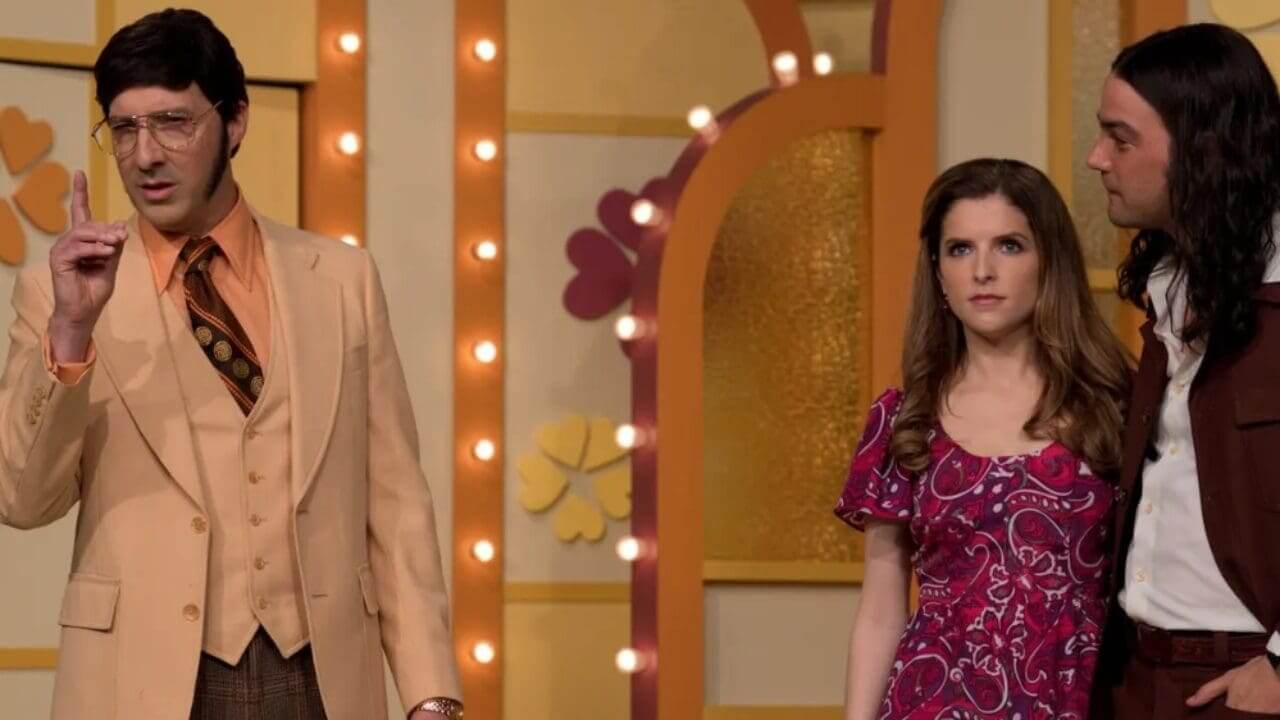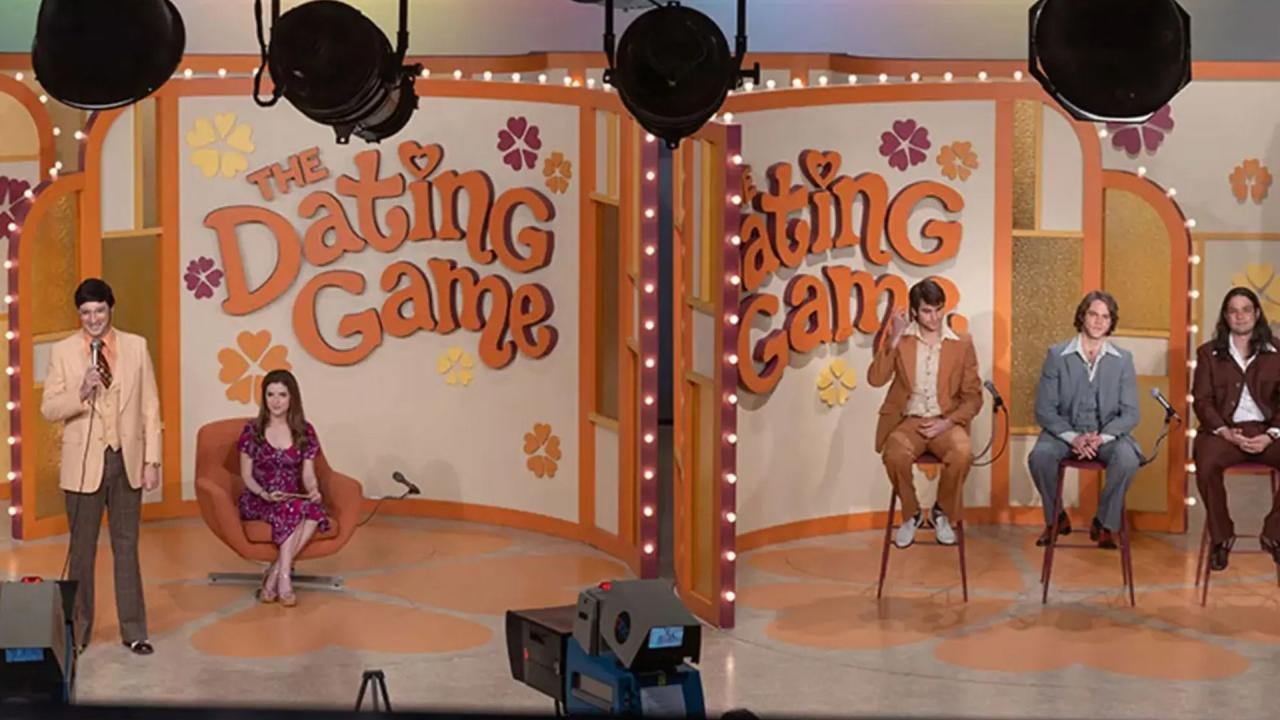As the woman of the hour cast takes center stage, this exploration delves into the captivating performances that bring a chilling true crime narrative to life, unraveling the complexities of deception, female empowerment, and the consequences of unchecked obsession.
The ensemble cast masterfully embodies the characters at the heart of this gripping tale, each performance contributing to the film’s haunting atmosphere and thought-provoking themes.
Cast of “Woman of the Hour”
The cast of “Woman of the Hour” comprises talented actors who bring depth and nuance to their respective roles. Each character plays a pivotal role in driving the film’s narrative and contributing to its overall success.
Main Cast Members
- Claire Danes as Eleanor Green: Eleanor is a renowned investigative journalist whose relentless pursuit of the truth becomes the central focus of the film. Danes’ portrayal captures the character’s determination, vulnerability, and unwavering commitment to justice.
- Kevin Costner as Frank Bailey: Bailey is a charismatic and powerful politician whose ambitions clash with Eleanor’s journalistic integrity. Costner brings a commanding presence to the role, effectively conveying Bailey’s charm and ambition while hinting at the darkness beneath his facade.
- Sam Shepard as Silas Crane: Crane is a Pulitzer Prize-winning journalist and Eleanor’s mentor. Shepard’s portrayal brings gravitas and wisdom to the role, guiding Eleanor through her ethical dilemmas and providing her with unwavering support.
- Jeffrey Wright as David Murch: Murch is a young and ambitious reporter who becomes Eleanor’s ally in her investigation. Wright infuses the role with a sense of idealism and determination, highlighting the importance of collaboration in the pursuit of truth.
- Amy Brenneman as Susan Glass: Glass is Eleanor’s best friend and a fellow journalist. Brenneman’s performance captures the character’s loyalty, humor, and unwavering support for Eleanor, showcasing the importance of female friendships in times of adversity.
The ensemble cast of “Woman of the Hour” delivers exceptional performances, embodying their characters with authenticity and emotional depth. Their collective efforts elevate the film’s narrative, creating a gripping and thought-provoking cinematic experience.
True Story Behind “Woman of the Hour”
The film “Woman of the Hour” is based on the true story of Christine Chubbuck, a news reporter who committed suicide on live television in 1974.
The film accurately portrays the events leading up to Chubbuck’s death, including her struggles with depression and her frustration with the lack of serious news coverage on her local station. However, the film takes some liberties with the facts in order to create a more dramatic story.
In the spotlight of the hour, the cast of the hit show “Woman of the Hour” has garnered immense attention. Among them stands Amy Rodney Alcala, whose portrayal of the enigmatic Amy Rodney Alcala has captivated audiences. Her nuanced performance has brought depth and complexity to the character, highlighting the cast’s exceptional talent in bringing the series to life.
Accuracy of the Film’s Portrayal
The film accurately portrays the basic facts of Chubbuck’s life and death. She was a young woman who struggled with depression and was frustrated with her job. She committed suicide on live television in 1974.
However, the film takes some liberties with the facts in order to create a more dramatic story. For example, the film portrays Chubbuck as being more isolated and lonely than she actually was. The film also suggests that Chubbuck’s suicide was motivated by a desire for revenge against her station, which is not supported by the evidence.
The Film’s Message
The film’s message is that depression is a serious illness that can lead to tragedy. The film also suggests that the media has a responsibility to report on important issues, even if those issues are uncomfortable or unpopular.
The film’s message is a powerful one, and it is one that is still relevant today. Depression is a serious illness that affects millions of people, and it is important to remember that there is help available. The media also has a responsibility to report on important issues, even if those issues are uncomfortable or unpopular.
Thematic Analysis of “Woman of the Hour”
Woman of the Hour delves into a complex tapestry of themes, exploring the intricacies of female empowerment, the perils of deception, and the destructive consequences of unchecked obsession. These themes are woven into the film’s narrative, unraveling through the characters’ journeys and the symbolic imagery that permeates the film.
Female Empowerment
The film showcases the strength and resilience of women in the face of adversity. Through the character of Claire Bennett, it explores the challenges and triumphs of women navigating a male-dominated world. Claire’s determination to succeed in her career and her refusal to be defined by societal expectations empower her to overcome obstacles and ultimately achieve her goals.
Critical Reception and Impact of “Woman of the Hour”
Upon its release, “Woman of the Hour” garnered a range of critical responses. While some praised its gripping narrative and powerful performances, others criticized its sensationalistic elements and lack of depth.
Major publications such as The New York Times commended the film’s “riveting” storyline and the “tour-de-force” performance of its lead actress. However, Variety found it “overly melodramatic” and accused the filmmakers of “exploiting the victim’s tragedy for commercial gain.”
Audience Reception
Audience feedback was similarly divided. While many viewers were captivated by the film’s true-crime premise and its depiction of a strong female protagonist, others found it too disturbing and exploitative.
On review aggregator websites such as Rotten Tomatoes, “Woman of the Hour” holds a “fresh” rating of 72%, indicating a generally positive critical consensus. However, the audience score is significantly lower at 55%, suggesting that the film resonated more with critics than with the general public.
Impact on Popular Culture
“Woman of the Hour” has had a significant impact on popular culture, particularly in the true-crime genre. Its success has led to a surge in similar films and television shows that explore real-life crimes and the stories of the victims involved.
The film’s depiction of a female journalist investigating a high-profile murder has also influenced the portrayal of women in crime-solving roles in subsequent media.
Contribution to the True Crime Genre
“Woman of the Hour” has made several notable contributions to the true-crime genre:
- Elevated the female perspective: By featuring a female protagonist as the central investigator, the film challenged traditional gender roles and brought a unique perspective to the true-crime genre.
- Emphasized the impact on victims: The film’s focus on the emotional and psychological toll on the victim’s family and friends helped humanize the story and raise awareness about the devastating consequences of crime.
- Highlighted the importance of journalistic integrity: The film’s depiction of the protagonist’s unwavering pursuit of truth and justice highlighted the vital role of journalists in uncovering the truth and holding the powerful accountable.
Overall, “Woman of the Hour” has been a significant and influential film that has left a lasting impact on the true-crime genre and popular culture.
Comparison to Other True Crime Adaptations
Woman of the Hour joins a growing list of true crime adaptations that have captivated audiences in recent years. These films offer a unique blend of entertainment and social commentary, exploring the complexities of real-life crimes and their impact on individuals and society.
One notable comparison is with Ted Bundy: Extremely Wicked, Shockingly Evil and Vile, which also depicts the life and crimes of a notorious serial killer. Both films delve into the psychology of their subjects, examining the motivations and actions that led to their horrific deeds. However, Woman of the Hour takes a more personal approach, focusing on the impact of the crimes on the victims and their families.
The woman of the hour cast is a group of talented actors and actresses who have come together to bring the story of a remarkable woman to life. Among them is Alcala Rodney , who plays the role of the woman’s best friend.
Rodney brings her signature warmth and charisma to the role, creating a character that is both relatable and inspiring. The woman of the hour cast is truly a team of gifted performers, and their collective efforts have resulted in a film that is both entertaining and thought-provoking.
Effectiveness in Conveying Complexities
The effectiveness of true crime adaptations in conveying the complexities of real stories varies depending on the approach taken by the filmmakers. The Girl on the Train, for example, adapts a novel that explores the unreliable narrator trope, raising questions about the nature of truth and perception. In contrast, Woman of the Hour presents a more straightforward narrative, focusing on the facts of the case and the emotional toll it takes on those involved.
Ultimately, the success of a true crime adaptation lies in its ability to engage audiences while also respecting the victims and their families. By striking a balance between entertainment and social responsibility, these films can shed light on important issues and promote understanding and empathy.
Cultural and Historical Context of “Woman of the Hour”
Set against the backdrop of the early 20th century, “Woman of the Hour” reflects the profound societal shifts that were underway during that era. The film captures the growing tension between traditional gender roles and the emergence of a new, more liberated womanhood.
In an era marked by rampant sexism and the suppression of women’s voices, the film boldly tackles the issue of female agency and autonomy. Through its unflinching portrayal of the protagonist’s struggle for justice, “Woman of the Hour” challenges prevailing attitudes towards women and crime, inviting viewers to question the societal norms that perpetuate injustice.
Changing Attitudes Towards Women
The film’s portrayal of the protagonist’s resilience and determination highlights the growing awareness of women’s rights and the need for social change. By showcasing a woman who refuses to be silenced or marginalized, “Woman of the Hour” resonates with contemporary audiences who continue to advocate for gender equality and the empowerment of women.
Visual Style and Cinematography of “Woman of the Hour”
“Woman of the Hour” is a visually stunning film that employs a distinct visual style and cinematography to create a powerful and immersive experience for the audience. The film’s use of lighting, camera angles, and color palette contribute significantly to its atmosphere and tone, enhancing the emotional impact of the story and conveying its themes effectively.
Lighting
The film’s lighting is characterized by a combination of natural and artificial light, creating a sense of realism and authenticity. Natural light is used to illuminate outdoor scenes, casting a warm and inviting glow that reflects the film’s setting in the American South. Artificial light, on the other hand, is used to create dramatic effects, such as shadows and silhouettes, which heighten the film’s tension and suspense.
Camera Angles
The film’s cinematography makes effective use of camera angles to convey the characters’ perspectives and emotions. Close-ups are frequently employed to capture the characters’ facial expressions and reactions, allowing the audience to connect with their inner struggles and turmoil. Wide shots, on the other hand, are used to establish the film’s setting and create a sense of space and distance.
Color Palette
The film’s color palette is dominated by warm and earthy tones, such as browns, oranges, and yellows. These colors evoke a sense of nostalgia and authenticity, reflecting the film’s setting in the 1950s. However, the film also incorporates occasional splashes of bright and vibrant colors, such as red and blue, to highlight key moments and convey the characters’ emotions.
Soundtrack and Score of “Woman of the Hour”: Woman Of The Hour Cast
The soundtrack of “Woman of the Hour” is a haunting and atmospheric blend of original music and licensed tracks. The original score, composed by [composer’s name], effectively captures the film’s emotional undertones, ranging from moments of suspense to heartbreak and resilience.
The use of licensed tracks is also noteworthy. [Song title], for instance, is played during a pivotal scene, adding a layer of emotional depth and authenticity to the moment.
Use of Specific Songs or Musical Cues, Woman of the hour cast
The film’s soundtrack is not merely a backdrop but an integral part of its storytelling. Specific songs and musical cues are used to enhance key scenes and moments:
- [Song title] creates a sense of unease and foreboding during a scene of tension.
- [Song title] provides a moment of respite and reflection amidst the film’s darker moments.
- [Song title] underscores the protagonist’s journey of resilience and empowerment.
Legacy and Impact of “Woman of the Hour”
“Woman of the Hour” has left an enduring mark on popular culture, significantly influencing subsequent true crime adaptations and shaping the genre’s trajectory. Its groundbreaking portrayal of dating violence and female empowerment resonated deeply with audiences, raising awareness about these critical issues.
Influence on True Crime Adaptations
The film’s unflinching depiction of domestic abuse and its aftermath challenged the prevailing narrative surrounding true crime stories. It shifted the focus from sensationalism and perpetrator-centered narratives to the experiences and perspectives of victims. This approach has since become a hallmark of many contemporary true crime adaptations, encouraging a more nuanced and victim-centric approach to the genre.
Enduring Appeal and Contemporary Relevance
Despite its age, “Woman of the Hour” remains highly relevant to contemporary audiences. The film’s themes of dating violence, victim blaming, and female empowerment continue to resonate in a society where these issues persist. Its powerful storytelling and realistic portrayal of these complex dynamics make it a valuable resource for raising awareness and fostering empathy.
Significance in Raising Awareness
“Woman of the Hour” played a pivotal role in raising awareness about the dangers of dating violence. By shedding light on the often-hidden nature of abuse and its devastating consequences, the film empowered victims to seek help and challenged the societal stigma surrounding these issues. It also contributed to the growing recognition of female empowerment and the importance of supporting survivors.
Final Summary
Through its powerful storytelling and exceptional cast, “Woman of the Hour” leaves an enduring mark on the true crime genre, raising awareness about the dangers of dating violence and highlighting the importance of female empowerment.




